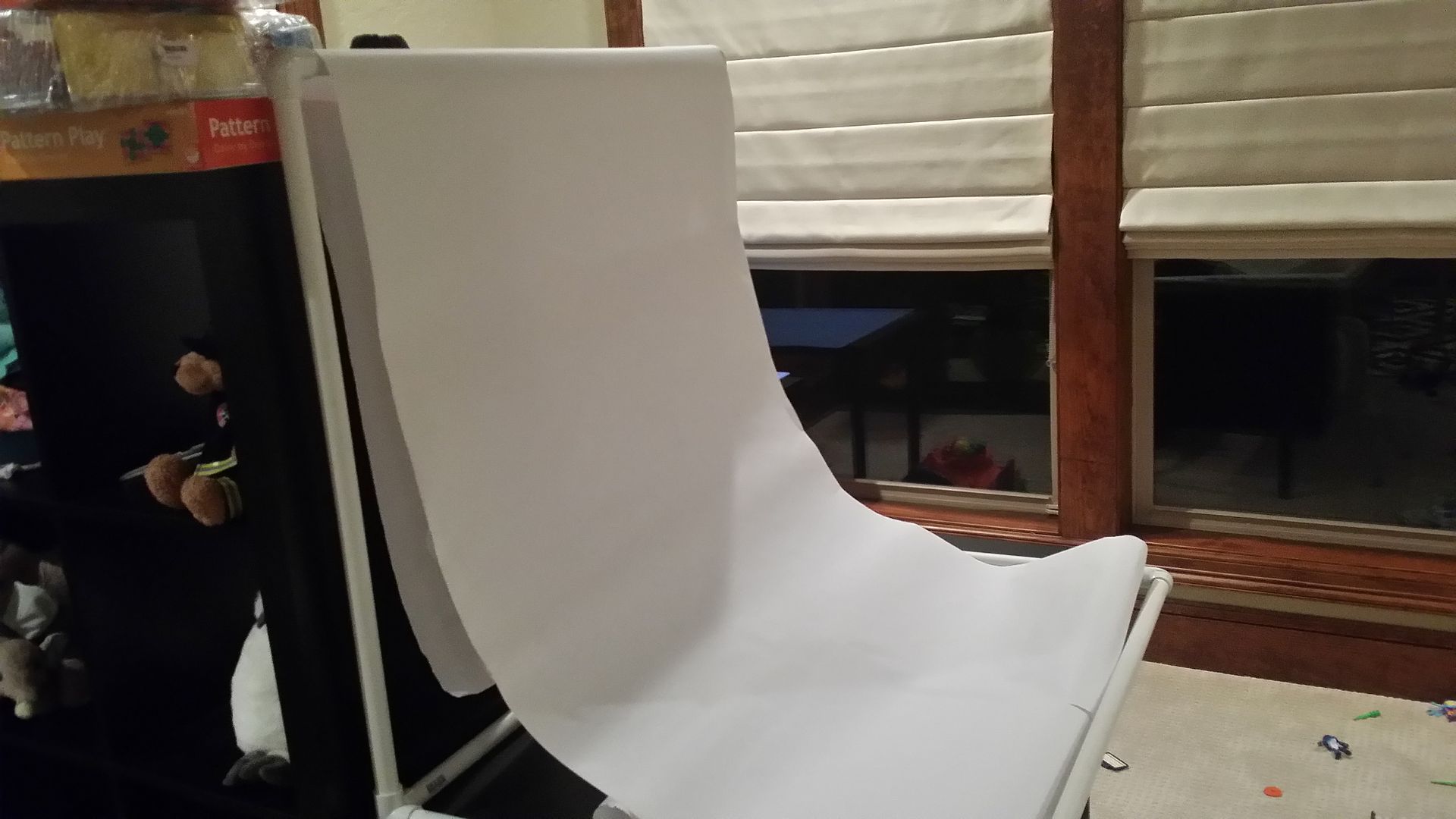Yeah...pinlight is cool to pick up highlights, but what really gives you the beauty shots is soft light. Reflector, diffusion...and sky light (not direct sunlight) also does very nicely if you can set up to use it. Doesn't have to be expensive or elaborate. Hold a piece of white foam-core up in direct light, just out of frame, to make a bounce light. You can ever wrap a t-shirt over a desk lamp to make a softer light!
Two sources better than one. One will inevitably leave shadows. Fill them in with a second light of lower intensity. Even better; three lights. I'm really fond of the look of a stronger light behind the object, picking up highlights along the edges, and then two weaker lights coming from the camera direction.
And seamless backgrounds are nice. Again, doesn't have to be elaborate. Stick a piece of posterboard behind the prop. Trick here is you don't set it on edge. You set the prop on
it, and curve it up to rest against a wall. That means there's no visible edge/horizon.
I got lots to learn myself. Look forward to hearing what other people have to contribute.
(Oh, personally? I'm from a theater background -- designed fifty-odd shows in 300-800 seat houses. So I like drama; color and chiaroscuro and hard key light and so forth. And it doesn't take a lot of gear to do. This pic was done with light from a flashlight, a holocron, and a barbecue lighter: )
Two sources better than one. One will inevitably leave shadows. Fill them in with a second light of lower intensity. Even better; three lights. I'm really fond of the look of a stronger light behind the object, picking up highlights along the edges, and then two weaker lights coming from the camera direction.
And seamless backgrounds are nice. Again, doesn't have to be elaborate. Stick a piece of posterboard behind the prop. Trick here is you don't set it on edge. You set the prop on
it, and curve it up to rest against a wall. That means there's no visible edge/horizon.
I got lots to learn myself. Look forward to hearing what other people have to contribute.
(Oh, personally? I'm from a theater background -- designed fifty-odd shows in 300-800 seat houses. So I like drama; color and chiaroscuro and hard key light and so forth. And it doesn't take a lot of gear to do. This pic was done with light from a flashlight, a holocron, and a barbecue lighter: )
Attachments
Last edited:





